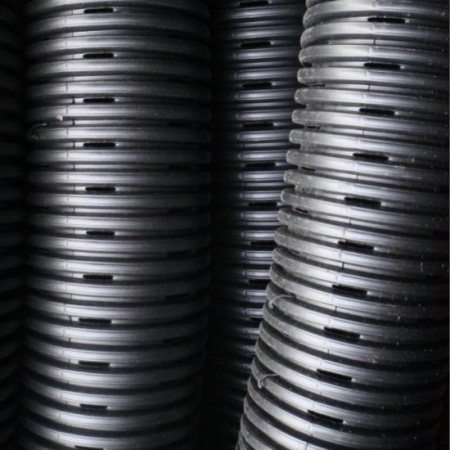Difference between revisions of "Pipes"
Jump to navigation
Jump to search
Jenny Hill (talk | contribs) |
Jenny Hill (talk | contribs) |
||
| Line 1: | Line 1: | ||
<div class="col-md-8"> | <div class="col-md-8"> | ||
| + | Pipes should have been manufactured in conformity with the latest standards by the Canadian Standards Association (CSA) or ASTM International. | ||
*Perforated pipes should be continuously perforated, smooth interior HDPE (or equivalent material) with a minimum inside diameter of 100 mm. | *Perforated pipes should be continuously perforated, smooth interior HDPE (or equivalent material) with a minimum inside diameter of 100 mm. | ||
**Where freezing is a concern, horizontal underdrain pipes should be over-sized to a minimum 200 mm diameter. | **Where freezing is a concern, horizontal underdrain pipes should be over-sized to a minimum 200 mm diameter. | ||
| − | **Perforations should be | + | **Perforations should be made on all sides of the pipe and provide a ≥ 1 m<sup>2</sup> of open area per linear meter of pipe. |
*All underdrains should be capped on the upstream end. | *All underdrains should be capped on the upstream end. | ||
*At least one vertical well per BMP is recommended, for inspection and monitoring water level. | *At least one vertical well per BMP is recommended, for inspection and monitoring water level. | ||
Revision as of 20:01, 18 July 2017
Pipes should have been manufactured in conformity with the latest standards by the Canadian Standards Association (CSA) or ASTM International.
- Perforated pipes should be continuously perforated, smooth interior HDPE (or equivalent material) with a minimum inside diameter of 100 mm.
- Where freezing is a concern, horizontal underdrain pipes should be over-sized to a minimum 200 mm diameter.
- Perforations should be made on all sides of the pipe and provide a ≥ 1 m2 of open area per linear meter of pipe.
- All underdrains should be capped on the upstream end.
- At least one vertical well per BMP is recommended, for inspection and monitoring water level.
- Well(s), of 100 - 150 mm diameter perforated pipe, should extend to the bottom of the facility.
- Where a horizontal underdrain is being installed, an upstream and a downstream well should be coupled to the underdrain pipe. The pair of wells can then be used to flush out the length of underdrain if required.
- The exposed tops of all wells should be fitted with lockable caps.
- Non-perforated pipes should be used for conveyance to and away from the facility, including overflow.
- To function correctly, the capacity of the overflow pipes must be greater than the inlet(s).
